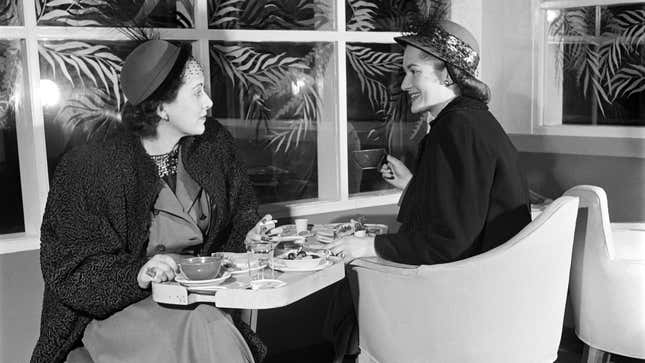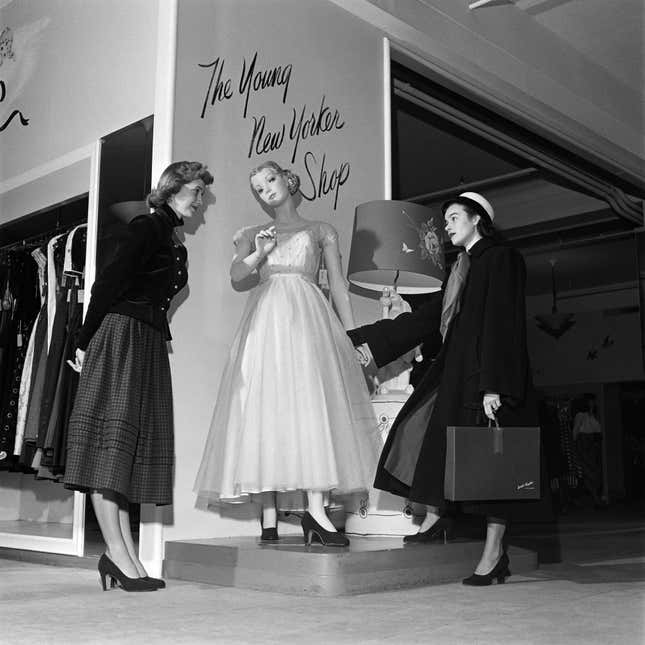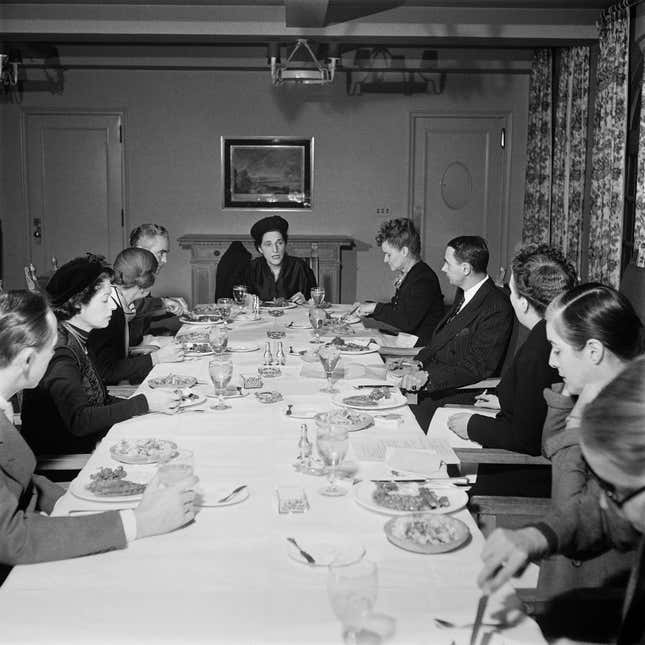

Lord & Taylor is the latest retailer to file bankruptcy amid the economic disruption of the pandemic. It was struggling for a long, long time before covid, but in its heyday, Lord & Taylor was defined by its fanciness—a particular vision of fanciness, one that was about a specific type of ready-to-wear chicness and style. The Lord & Taylor woman’s grandmother might have worn fussy s-curve corsets and innumerable layers, but they were poised in a pair of solid pumps, straddling the formality of their predecessors and the informality of today.
Founded in 1826, Lord & Taylor is one of the oldest department stores in the US, one intimately linked with New York City and its upper social echelon. Look at this shot from 1946, which just screams, “I’m here to assemble my wardrobe for Radcliffe.”

A good illustration of the ways in which the environment of the city and the company were intertwined: The window displays. Lord & Taylor lead the way in the creation of ever-more elaborate Christmas designs. It’s not for the holidays, but here’s Prince Philip on a 1966 visit, checking out a display of imported British goods, looking duly engaged.

The company unloaded its massive Fifth Avenue flagship in 2019, selling the building to WeWork for an absurd $850 million and truly signaling the end of the golden age of the urban department store. It had been over for a while, of course, but the sale was an important symbolic moment.
Another interesting fact about Lord & Taylor: It was the first retail firm of its size to put a woman in charge. Dorothy Shaver ran the company at the height of its power and glamour, overseeing the shift from the interwar years to the brand’s extension into the suburbs. Her legacy extended beyond simply being the first, though: Shaver played an important role in helping promote American ready-to-wear designers from the 1930s and on into the post World War II era, when Paris was still putting itself back together. She helped create that aura of crisp style you see in the pictures above that reads as formal today, but at the time seemed made for a woman on the move, striding around the streets of Manhattan, and it was very successful for the company.
Here Shaver is, chairing a working lunch in 1946. Note that at least two women kept their hats on.

A New York Times report from the store’s 150th-anniversary party in 1976—headlined “At Lord & Taylor, 150 Is Only the Start”—now reads as richly ironic, knowing how rough the next few decades would be. But still, they had enough juice to get Sophia Loren into the store selling perfume in 1980, and it’s hard to imagine what could be more glamorous than that.
